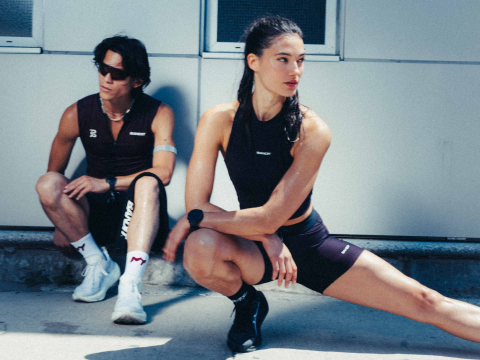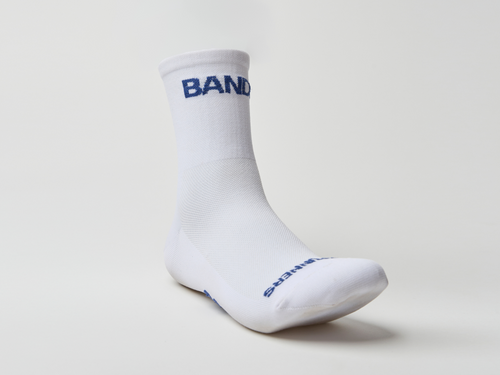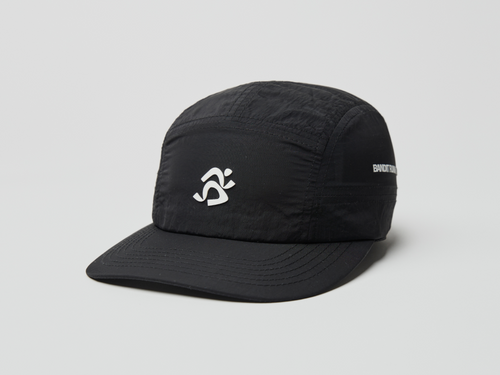Cross-training with strength-focused activities turns regular runners into... better runners. It's scientifically documented that by strengthening your entire body, you can significantly lower your chance of injury, while keeping yourself in a generally healthy condition, all without subjecting your body to the constant stress that comes with your running routine. Variety is indeed the spice of life...and training.
Most workout regimens will emphasize swimming, weightlifting, and yoga, largely because these activities help your body get stronger and more mobile in ways that running just cannot, in addition to generally being at the forefront of mainstream zeitgeist of workout culture.
While we're big fans of the tried and true, let's discuss another form of cross-training: indoor bouldering.

What is bouldering
Indoor bouldering is climbing without ropes, typically on a wall that's no taller than 12-15 feet. "Crash Pads" or padding is placed beneath the climbers to allow for safe falling.
You may have heard of bouldering, lead climbing and speed climbing from their Olympic premiere in Tokyo 2022. Given bouldering's accessibility and it's growing popularity (*fun fact: 63 percent of climbing gyms that opened in 2021 were bouldering gyms), we'd advise starting here to both learn the foundation of climbing while supplementing your running plan.
But my arms
It's a common misconception that bouldering only activates the arm and back muscles. If you're doing it right, then you'll be activating everything from your core (key to any strong physical base), to your calves, hips, glutes and yes, your lats, biceps and forearms. Your full body will thank you.

Community
Similar to running, the climbing community is incredibly supportive. You're often scaling the wall in front of a group of people who want to push you and ultimately see you succeed. As with any new activity, that growth mindset is supercharged when you can share your tips, learn from others, and generally feed off the energy of a fellow group of learners.
What gym to choose?
There are many kinds of climbing gyms, some are bouldering only. Others offer top-rope (tall walls and you're on a rope) - for your first adventure we suggest a gym similar to our friends at GP81, packed with a wide variety of walls at different levels of expertise + a dedicated area for pure strength training (weights, squat racks, etc.)
Why a gym like GP81? They focus primarily around the sport of climbing. Having a cocktail bar or birthday parties at a gym are fun, but if you're looking to get a proper session with expert guidance from a great group of humans, we suggest finding those gyms with a pure focus on learning and improving your climbing game.

How to dress
What to wear at a climbing gym? If you're worried about looking like a newb in your outfit, have no fear. There's literally no dress-code - people climb in jeans, shorts, leggings, and spandex. Your style may or may not evolve as you go deeper in the sport, but no need to stress when you first begin.
That said, we recommend sporting something you don't mind getting a little scuffed up - an outfit that you'd be comfortable wearing doing yoga will translate well to climbing. Also, remember to bring a thin pair of socks for your climbing shoe rentals (definitely rent before you buy.) When you purchase climbing shoes, you'll almost always wear those without socks, but in rentals it's a best practice.
Worried about climbing shoe discomfort? Don't be. Beginner climbing shoes are designed to be put on once and leave on for the entire session, including walking between climbs. Advance climbing shoes, which look a bit like bananas, are designed to typically be removed when you're not on the wall.
What to avoid wearing
In climbing, you fall. It's inevitable. It's fun and it's a part of the thrill. That said, it's recommended that you avoid the following to make sure that you don't injure yourself or other climbers in the gym.
- No brimmed hats
- No butterfly clips or anything other than a scrunchie
- No water bottles that you plan on having on the mats
- No keys in pockets
Arriving at the gym
Research and sign the waiver before you get to the gym. This just speeds up the check in process so you can move right to training. We also highly recommend taking an intro or beginner class - you'll get tips that will make you all-the-more confident once you get on the wall.
Proper climbing technique isn't just great for cross training, it also ensures that you can climb longer without feeling tired. Better technique + longer climbing sessions = more fun. It's just science.

Haven't taken a class yet, but want to prep further before you do?
If you're like us, we're big on drowning ourselves in knowledge before starting a new activity. Here's some more resources to prime you into the world of climbing:
Plus some high-level tips on form:
- Arms Heavy: Keep your arms straight as much as possible. If you are bending your elbow on the wall, you’re most likely not engaging your legs or core muscles. Climbing isn’t pull ups, so if it feels like a pull-up straighten your arms.
- Look down, not up: You'll hear instructors saying this a lot. 9 times out of 10, it’s because you're focusing too much on where to place your arms, when the answer is at your feet.
- Grades: Climbing grades start at V0 for the easiest climbs and go all the way up to V17. Trust us, stick with the 0s to the 2s in your first couple of sessions. Like running, it’s not about all about the stats, just focusing on enjoying yourself.
- Read the route: Every climb has a specific “beta” (definition below) which is a method that can help you get up the wall. Taking a minute or two to plan how you’re going to get up can help dramatically.
- Chalk: We suggest asking your gym if they sell chalk before going. Chalk isn't about sticking to the wall, contrary to popular (beginner) belief, it's about mitigating perspiration on your hands so that you don't slip.
Climbing terms
Like running, climbing has its own language and terminology. Here are a few:
Problem: This is just a boulder or you may hear “boulder problem” in full.
Project: This is a problem that has someone stuck, and they are spending extra time to figure out how to complete the problem.
Send: All gas no breaks? Nope. “Sending” in climbing means just getting to the top of the boulder.
Route Setter: If a gym is a restaurant, the route setter is the executive chef. They are responsible for creating the problems.
Beta: This is the method for how to solve the boulder problem. Why is it called beta? It originates from the 1980s when climbers would tape themselves solving boulder problems on beta-max tape recorders. So the phrase “do you have the beta?” referred to having the information on how to solve the problem. Somehow, it stuck.
Campusing: Want to show off? This is the way to do it. This is climbing only using your arms. We don’t suggest doing this.













